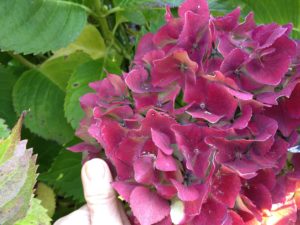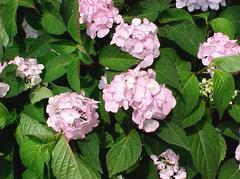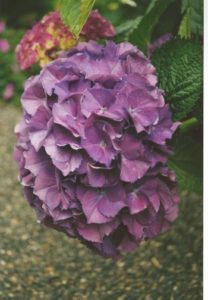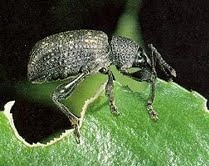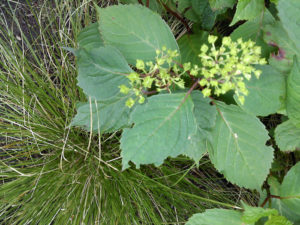Spring Hydrangea Pruning
A lot of my clients have asked me to help them with pruning their hydrangeas.
This blog addresses mophead hydrangea pruning. Hydrangea pruning is simple and easy once you know the rules. There is a link to a pruning video at the end of this blog produced by Cass Turnball of Plant Amnesty to help you feel more confident. There are 5 kinds of hydrangeas. This blog only addresses mophead hydrangea pruning.
Why prune hydrangea plants at all? Like most plants, pruned hydrangea shrubs will have a better shape so they look good regardless of the flowering aspect. Many of us buy a hydrangea and think it will be 4’ x 4’. Over time, many varieties will grow to 7’ tall. It is very important to plant the right plant in the right place so you don’t have to be frustrated. There are some varieties that are going to mature at and be easily kept in the 4’ to 5’ range. We prune to achieve that height as well as a good shape. If you have a variety that wants to be 7 or even 8 feet tall every year even with proper pruning, the best answer is to remove the plant and buy a variety whose size works for your garden. Old Arts and Crafts homes with 6’ high foundations are perfect for the hydrangeas that are most cheerful at 7’. They don’t work as well for homes with a 12” foundation or a small yard.Another reason we prune is to remove stems that no longer flower.
We prune hydrangeas in early to mid March in the Pacific NW. We start pruning our plants when they are about 3 years old or when you see the oldest stems are developing bark. Remove the oldest woody canes. On a young plant this might mean removing only 1 or 2 stems. We remove dead stems and canes and we deadhead flowers back to the first lateral buds. I think of these buds as rabbit ears. I love this task. I think it’s because I’m close to the ground and my soil smells good. I typically see 2 colors of buds at this time. The burgundy buds are just a bump on the stems. The tiny green buds (the rabbit ears) are such a vivid green. It says spring to me (and no it doesn’t rain every minute even in March). These are days when a wool sweater and a down vest are perfect for comfort.
There is more to the story about hydrangea pruning. Occasionally there are individual plants that didn’t read the rule book. My garden coach client Mary followed the proper pruning techniques and she lost all her flowers for the year!! AAACK!! Her plants are 30 plus years old. Since that debacle Mary only deadheads her plants, again just down to the first buds and she removes old woody stems. Her plants always flower beautifully and are the focal point of her summer garden. I’ve never had this happen to me but I’ve heard about it often enough from other professionals to know that some plants are probably genetically different than others. If you don’t prune at all, your plants will get big and ungainly looking. A build up of deadwood may diminish their flowering capacity.
For a detailed lesson on pruning mop head hydrangeas, see this video.

